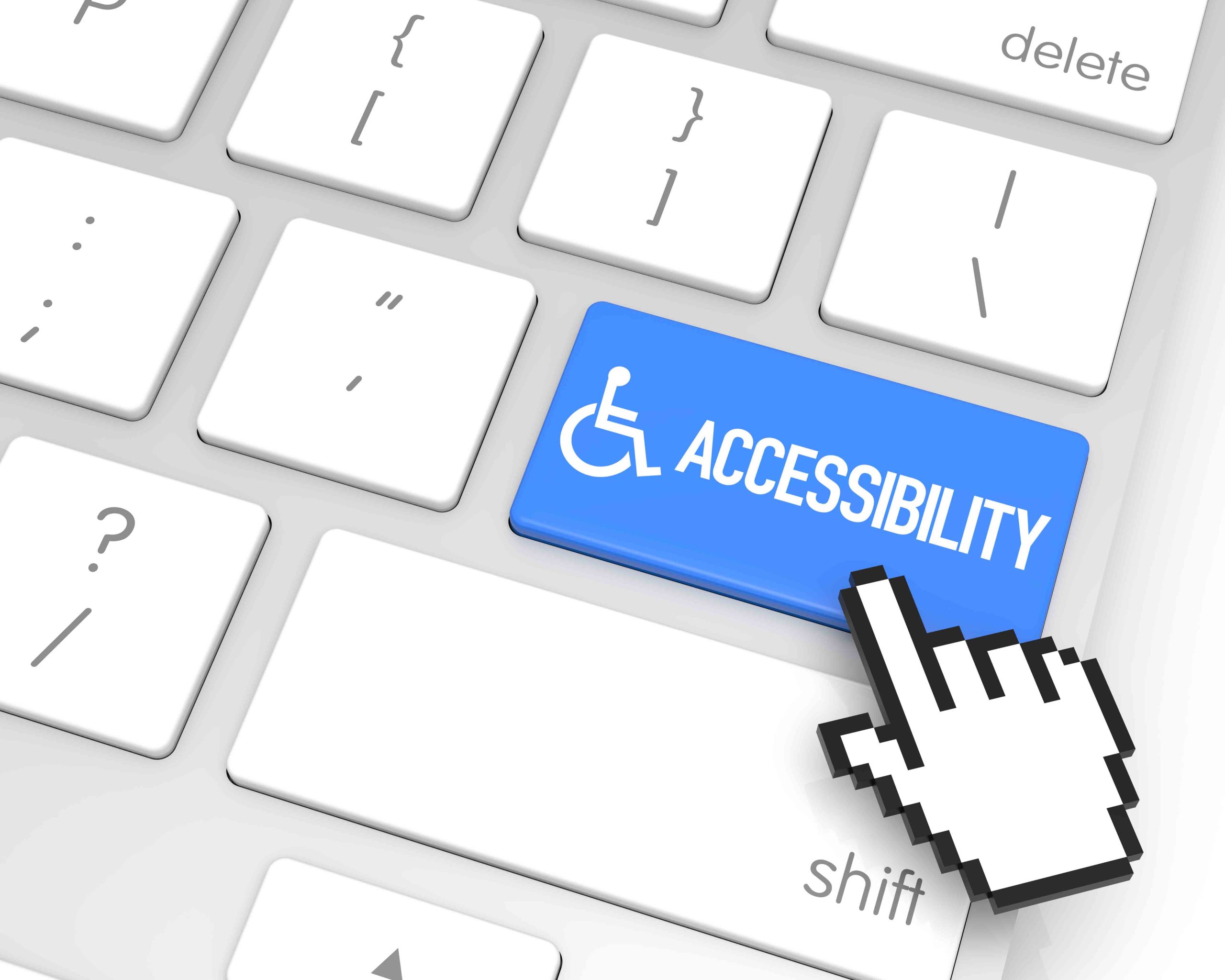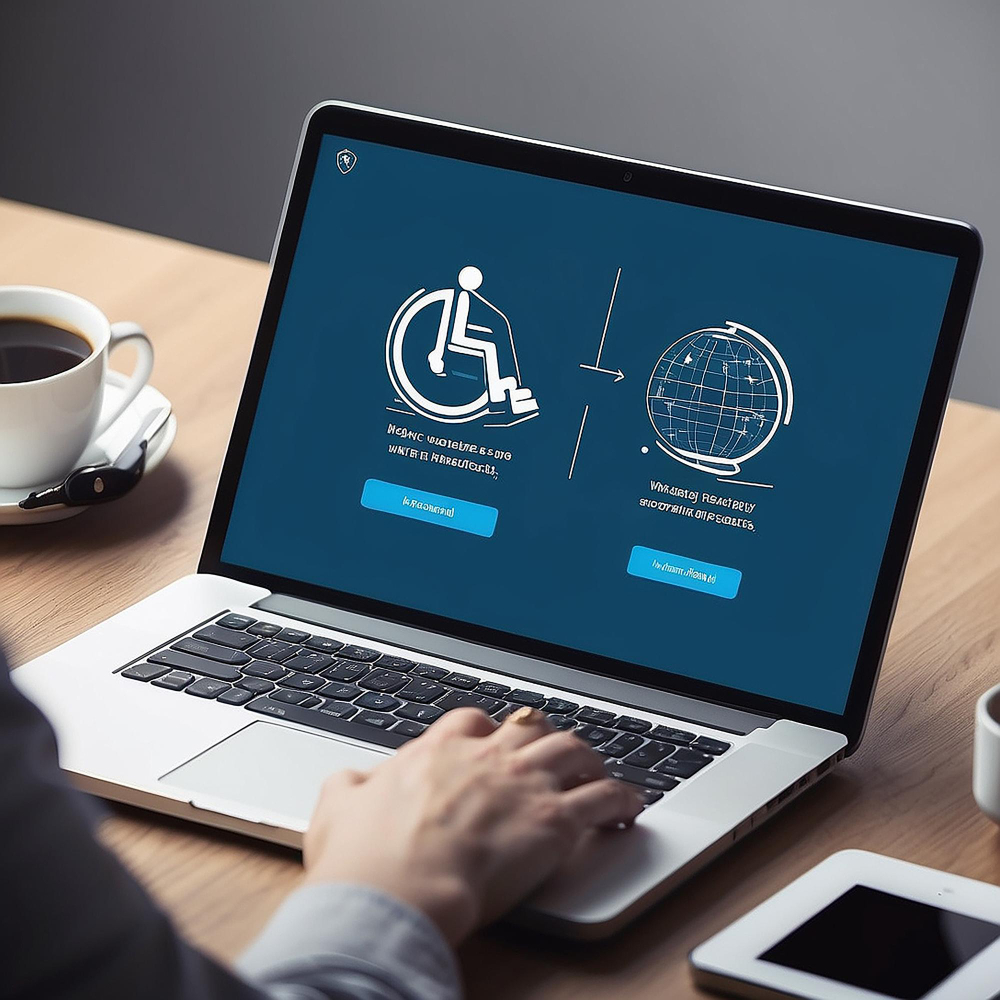
The digital world is continuously evolving, and websites have become an indispensable part of daily life for individuals and businesses. However, the internet’s promise of inclusivity can only be fulfilled if websites are accessible to all, including people with disabilities.
Website accessibility ensures that everyone, regardless of their abilities, can perceive, navigate, and interact with web content effectively. Central to this goal is the Web Content Accessibility Guidelines (WCAG), a globally recognized standard for web accessibility.
What is Website Accessibility?
Website accessibility refers to designing and developing websites that can be used by individuals with diverse abilities, including those with visual, auditory, motor, or cognitive impairments. An accessible website eliminates barriers that may prevent users with disabilities from accessing information or services.

For example, a visually impaired individual might rely on a screen reader to interpret web content, while someone with motor challenges might use a keyboard instead of a mouse to navigate a site. Without accessibility features in place, these users could face significant difficulties or exclusion, limiting their ability to interact with online platforms.
Why is Website Accessibility Important?
Legal Compliance
Many countries, including Singapore, have laws and regulations requiring digital accessibility. The Infocomm Media Development Authority (IMDA) actively promotes digital inclusion through initiatives like the Enabling Masterplan. Globally, accessibility standards such as the Web Content Accessibility Guidelines (WCAG) are referenced in legal frameworks, including the Americans with Disabilities Act (ADA) and the European Accessibility Act. Businesses that fail to comply risk legal penalties, lawsuits, and reputational damage.
Social Responsibility
Building an accessible website demonstrates a company’s commitment to inclusivity and social equity. By accommodating all users, businesses contribute to a more inclusive society and showcase their dedication to creating equal opportunities for everyone.
Expanded Audience Reach
Over 1 billion people globally live with some form of disability, according to the World Health Organization. By ensuring accessibility, businesses can reach a wider audience, tapping into a significant market segment that might otherwise be excluded from their digital offerings.

Improved User Experience
Accessibility features, such as clear navigation, readable text, and keyboard shortcuts, benefit all users—not just those with disabilities. These features enhance usability for older adults, individuals with temporary impairments, or users accessing content on mobile devices.
Enhanced SEO Performance
Search engines like Google favor websites that adhere to accessibility best practices. Features such as alt text for images and logical site structure improve both accessibility and search engine rankings, boosting visibility and discoverability.
Understanding WCAG Compliance
The Web Content Accessibility Guidelines (WCAG) provide a set of standards for making web content more accessible. These guidelines are based on four core principles, collectively known as POUR: Perceivable, Operable, Understandable, and Robust.
Perceivable
Information and interface elements must be presented in ways that all users can perceive. For example:
- Using sufficient contrast between text and background colors.
- Adding alternative text for images.
- Providing captions and transcripts for multimedia content.
Operable
A website’s functionality must be usable by all users, including those relying on assistive technologies. Best practices include:
- Ensuring keyboard accessibility for all functionality.
- Providing clear navigation and predictable layouts.
- Avoiding content that may trigger seizures, such as flashing animations.
Understandable
Content and design must be easy to understand and interact with. This includes:
- Using simple, clear language.
- Offering helpful error messages and input suggestions.
- Ensuring consistent navigation and design patterns.
Robust
Web content should work reliably with various assistive technologies and remain compatible as these technologies evolve. This involves adhering to proper coding practices and regularly testing for compatibility.
Steps to Achieve WCAG Compliance
Conduct an Accessibility Audit
Begin by assessing your current website using tools like WAVE or accessiBe to identify areas that need improvement. These tools highlight barriers preventing users with disabilities from accessing your site effectively.
Develop a Strategy
Create a detailed plan to address accessibility issues, prioritizing high-impact changes. Ensure that your team is aware of accessibility goals and equipped to implement them. Focus on key features such as adding alternative text to all images, ensuring all interactive elements are keyboard accessible, providing closed captions for videos and improving text readability through font choices and contrast adjustments.
Test with Assistive Technologies
Engage users with disabilities to test your website using tools like screen readers, magnifiers, or speech recognition software. This hands-on feedback is invaluable for fine-tuning your site.
Train Your Team
Ensure that designers, developers, and content creators are familiar with WCAG standards and accessibility best practices. Ongoing training helps maintain compliance and awareness.
Maintain Accessibility
Accessibility is not a one-time effort. Regular updates, audits, and monitoring are essential to ensure your website remains compliant as technologies and standards evolve.
Benefits of WCAG Compliance
Choosing a custom CMS also brings certain responsibilities. Since a custom solution doesn’t rely on a vast community for support, your organization will need a skilled technical team to manage updates, troubleshoot issues, and develop new features as needed. However, this internal control over your system allows for greater flexibility and responsiveness to your own needs rather than relying on a broader user base to influence updates and improvements.
Boosts Brand Reputation
Creating an accessible website demonstrates a company’s commitment to inclusivity and social responsibility. By ensuring that all users, including those with disabilities, can access and interact with your website, your business sends a clear message of care and respect. This enhances your brand image and fosters trust and loyalty among customers. A reputation as a socially responsible organization can also set your business apart from competitors, further strengthening your market position.
Expands Market Reach
With over 1 billion people worldwide living with disabilities, ensuring your website is accessible opens up your business to a broader audience. Accessibility features enable users with various impairments to engage with your website, whether it’s purchasing products, accessing information, or contacting support. By catering to this often-overlooked segment of the population, you can grow your customer base and increase your potential for sales and engagement.
Improves User Experience for Everyone
Accessibility features, such as clear navigation, readable text, and keyboard shortcuts, benefit all users, not just those with disabilities. For example, older adults and users with temporary impairments, such as a broken arm, can navigate your site more easily. Additionally, people using mobile devices or slow internet connections benefit from features like optimized content and simplified navigation. A better user experience leads to higher engagement, increased time on site, and improved customer satisfaction.
Enhances SEO Performance
Websites designed with accessibility in mind often align closely with search engine optimization (SEO) best practices. Features like descriptive alt text for images, logical heading structures, and well-organized content make it easier for search engines like Google to crawl and index your site. This can lead to improved rankings in search results, making your website more discoverable to potential users. An accessible website is not just user-friendly but also search engine-friendly.
Provides a Competitive Advantage
Many businesses have yet to fully embrace website accessibility, leaving a gap that you can leverage to stand out. By prioritizing WCAG compliance, you position your business as forward-thinking and inclusive, giving you an edge over competitors who neglect accessibility. Customers and clients are more likely to choose businesses that align with values of inclusivity and social equity.
Ensures Legal Compliance
Compliance with accessibility standards helps businesses avoid legal risks and penalties. Many countries, including Singapore, have regulations requiring digital accessibility. Adhering to WCAG guidelines ensures that your website meets these legal requirements, reducing the likelihood of lawsuits or fines. Beyond legal compliance, it safeguards your business from reputational harm caused by accessibility-related disputes.
Challenges in Implementing WCAG Compliance
While the benefits of accessibility are clear, implementation can be challenging. Retrofitting existing websites may require significant time and resources. Additionally, businesses may lack the technical expertise needed to implement WCAG standards effectively. Partnering with experienced web developers who specialize in accessibility can help overcome these obstacles. Here are the common challenges in implementing WCAG Compliance.
Retrofitting Existing Websites
Adapting an existing website to meet WCAG standards can be a time-intensive and costly process. Older websites often rely on outdated coding practices or technologies that are incompatible with accessibility requirements. Retrofitting these sites may require a complete redesign or redevelopment to incorporate accessibility features, such as proper navigation, alternative text, and keyboard compatibility.
Knowledge Gaps in Accessibility Standards
Many businesses and developers lack awareness or understanding of the Web Content Accessibility Guidelines (WCAG). Without expertise in accessibility requirements, it can be challenging to identify non-compliant areas or implement effective solutions. This knowledge gap often leads to oversights, delays, or incomplete compliance efforts, which can undermine the benefits of accessibility.
Cost and Resource Allocation
Achieving WCAG compliance often requires a significant investment in resources, including time, budget, and skilled personnel. Smaller businesses with limited budgets may find it challenging to allocate the necessary resources for accessibility improvements. Additionally, prioritizing accessibility updates can sometimes divert attention from other business-critical initiatives.
Keeping Up with Evolving Standards
The WCAG guidelines are periodically updated to address emerging technologies and evolving accessibility needs. For instance, WCAG 2.1 introduced new criteria to improve accessibility for mobile devices and people with cognitive or low vision disabilities. Staying updated with these changes and applying them consistently can be a challenge, particularly for businesses that lack dedicated accessibility specialists.
Conclusion
Website accessibility is an essential aspect of modern web design. By adhering to WCAG guidelines, businesses can meet legal requirements, demonstrate social responsibility, and unlock significant benefits, including expanded audience reach, improved SEO, and enhanced user experiences. Creating an accessible website is not just about compliance—it’s about ensuring equal access and opportunity for all.
Start your accessibility journey today and contribute to a more inclusive digital landscape.
